RAAF F/A-18A
Worimi Hornet
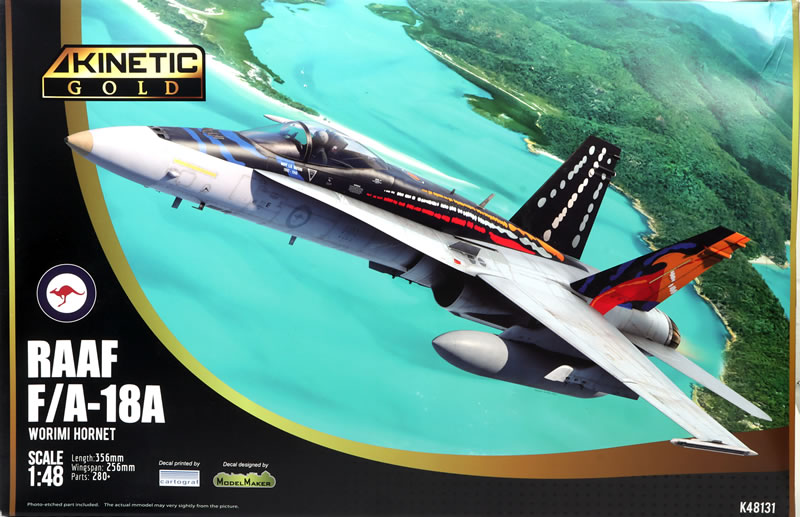
Kinetic, 1/48 scale
S u m m a r y |
| Item No. |
Kinetic Model Kits Item No. K48131 - RAAF F/A-18A Worimi Hornet |
| Contents and Media: |
229 grey injection moulded parts; 21clear parts; 22 photo-etched metal parts; markings for one aircraft. |
| Scale |
1/48 |
| Price: |
USD$39.99
plus shipping available online from Lucky Model |
| Review Type: |
FirstLook |
| Advantages: |
Striking marking choice; high level of detail; excellent surface textures; extensive weapons load; high quality decals; great value. |
| Disadvantages: |
|
| Recommendation: |
This is a very colourful choice for the F/A-18A Hornet and it represents smoking hot value at just USD$39.99. You'd pay that for some decal sheets alone! |
Reviewed
by Brett Green

The McDonnell Douglas F/A-18 Hornet is a twin-engine supersonic, all-weather carrier-capable multirole combat jet, designed as both a fighter and attack aircraft (hence the F/A designation). Designed by McDonnell Douglas (now Boeing) and Northrop, the F/A-18 was derived from the latter's YF-17 in the 1970s for use by the United States Navy and Marine Corps. The Hornet is also used by the air forces of several other nations and, since 1986, by the U.S. Navy's Flight Demonstration Squadron, the Blue Angels.
The F/A-18 has a top speed of Mach 1.8 (1,034 knots, 1,190 mph or 1,915 km/h at 40,000 ft or 12,200 m). It can carry a wide variety of bombs and missiles, including air-to-air and air-to-ground, supplemented by the 20-mm M61 Vulcan cannon. It is powered by two General Electric F404 turbofan engines, which give the aircraft a high thrust-to-weight ratio. The F/A-18 has excellent aerodynamic characteristics, primarily attributed to its leading edge extensions. The fighter's primary missions are fighter escort, fleet air defense, Suppression of Enemy Air Defenses (SEAD), air interdiction, close air support, and aerial reconnaissance. Its versatility and reliability have proven it to be a valuable carrier asset, though it has been criticized for its lack of range and payload compared to its earlier contemporaries, such as the Grumman F-14 Tomcat in the fighter and strike fighter role, and the Grumman A-6 Intruder and LTV A-7 Corsair II in the attack role.

The Hornet first saw combat action during the 1986 United States bombing of Libya and subsequently participated in the 1991 Gulf War and 2003 Iraq War.
In 1992, the original Hughes AN/APG-65 radar was replaced with the Hughes (now Raytheon) AN/APG-73, a faster and more capable radar. A-model Hornets that have been upgraded to the AN/APG-73 are designated F/A-18A+.*
* Historical summary courtesy of Wikipedia
Kinetic released their 1/48 scale F/A-18C Hornet to justified acclaim in May 2016. Mick Evans conducted a detailed review of this initial release.
Kinetic expanded the family with a versatile F/A-18A+, a Canadian CF-188 or an upgraded F/A-18B two-seater. As far as I can tell, all the parts needed to build and arm an F/A-18C were still in that box too.
Now Kinetic has released an F/A-18A in striking RAAF Worimi Hornet markings.
The Worimi people are Aboriginal Australians from the eastern Port Stephens and Great Lakes regions of coastal New South Wales, Australia. Before contact with settlers, their people extended from Port Stephens in the south to Forster/Tuncurry in the north and as far west as Gloucester.
The Worimi Hornet, with its soaring eagle insignia and traditional dot painting style, is public and national recognition of Indigenous military service, past, present and future. The scheme is also in honour of Len Waters, the first aboriginal RAAF fighter pilot. He flew 95 missions in the South West Pacific theatre.
Len was also my wife's mother's auntie's husband!
Kinetic's Morimi Hornet comprises 229 parts in grey plastics, 21 clear parts, 22 photo-etched metal parts and markings for a single aircraft.
Surface detail is excellent, with a combination of very fine crisp panel lines and rows of rivets. Raised details are also present as appropriate.
The fuselage is a horizontal split construction with the upper fuselage containing the upper wing surfaces to which is added the lower wings and optional nose sections.
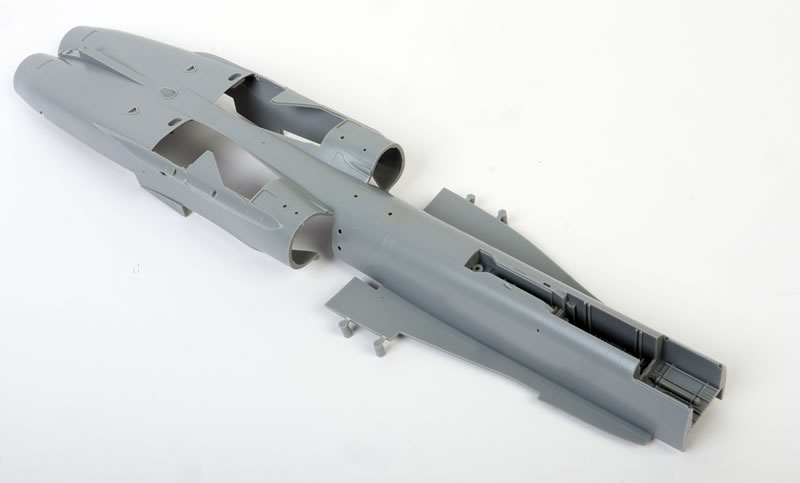
Intakes are full length and two closed burner cans are included. Several sources have confirmed that this is the apprporiate configuration for a parked F/A-18.
Cockpit detail is good straight from the box, both for the single seat and two seater versions.
The wheel well detail moulded to the main parts looks terrific.
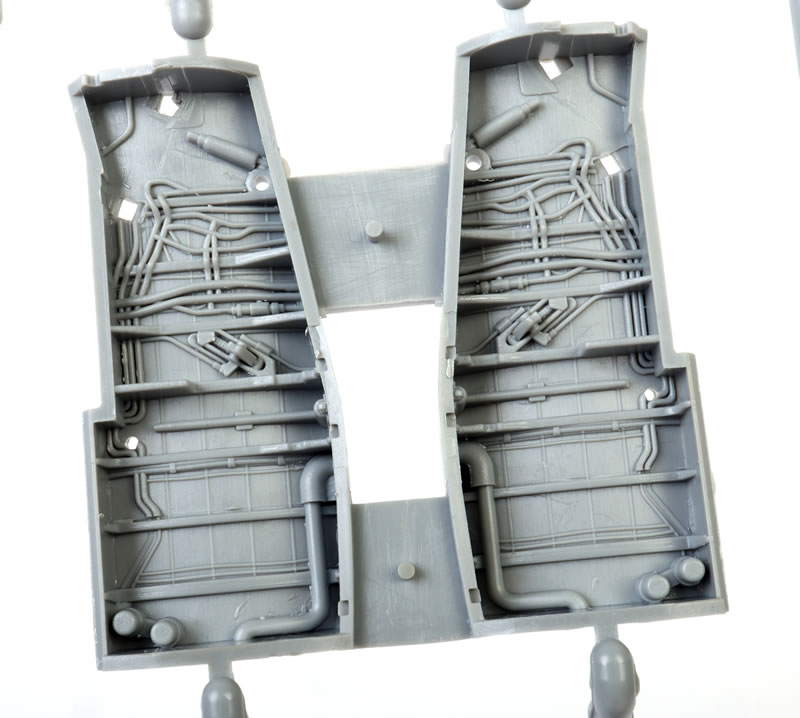
You'll need to check your references for this RAAF aircraft. Early Australian Hornets had the catapult launch bar removed, but upgraded RAAF Hornets had a similarly sized and shaped dummy, because they had problems with nose wheel shimmy cause by its absence (thanks to Shane Weier for this information).
Control surfaces including leading edge flaps and upper fuselage speed brake are all provided separately and may be posed to taste.
The kit's photo-etched fret includes detail parts for chaff dispensers, gunsight mount, canopy handles / mirrors and more.
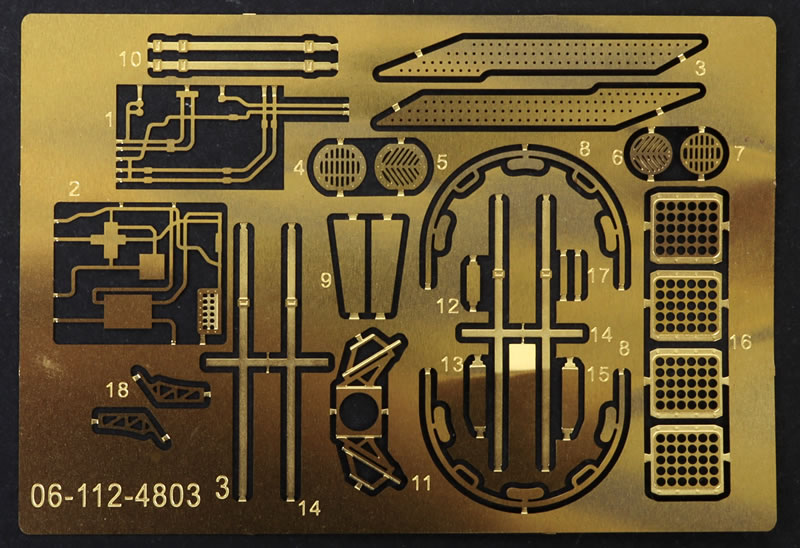
The clear parts are spread over three sprues and include both the single seat and two-seater canopies.
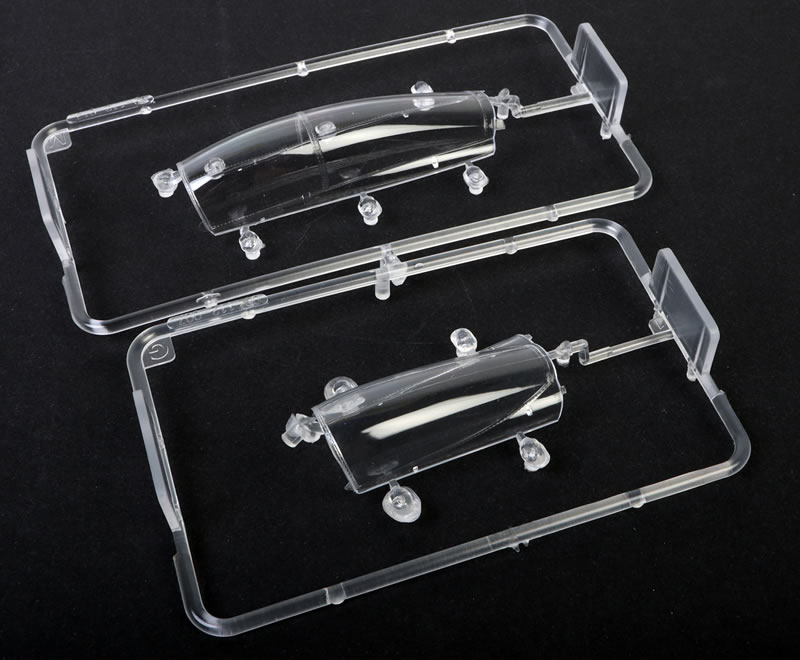
The clear parts are nice and thin and free from distortion. There is, however, a raised centreline seam on the canopy and windscreen parts that will have to be scraped and sanded off.
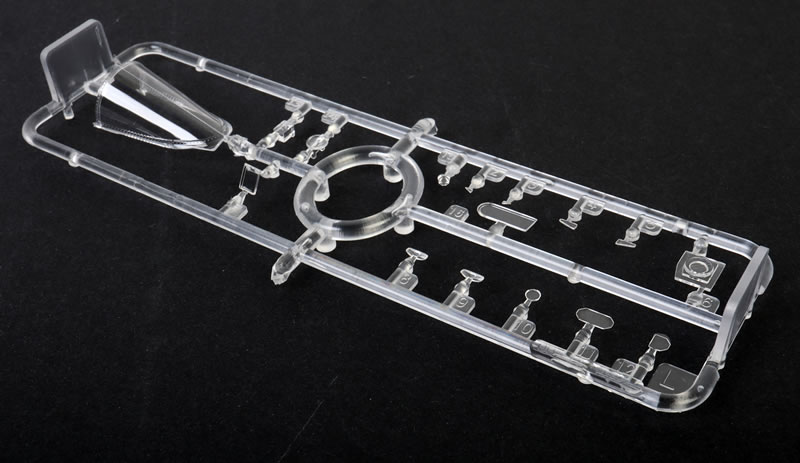
Stores are very extensive and will provide a boon for your spares box.
In addition to three external fuel tanks, the following stores are supplied:
-
CVER
-
AIM-9X
-
AIM-120B/C
-
GBU-12
-
CBU-20
-
AAQ-13/14
-
AAQ-28/Sniper
The instructions offer guidance for configurations.
Markings
The Worimi markings are provided on the colourful decal sheet, printed by Cartograf and designed by Model Maker Decals. Stencils, slime lights and other smaller markings are also on the sheet.
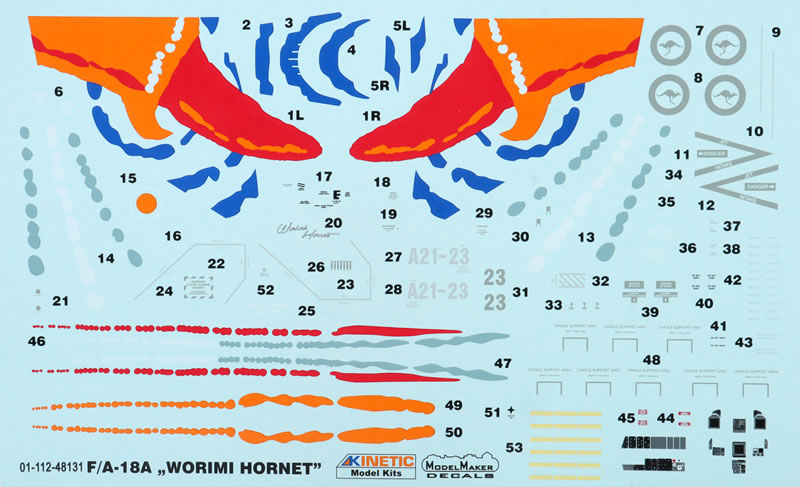
The decal sheet is printed perfectly in register and colours look great.
This is a very colourful choice for the F/A-18A Hornet and it represents smoking hot value at just USD$39.99. You'd pay that for some decal sheets alone!
Thanks to Lucky Model for the samples
Review Text and
Images Copyright © 2023 by
Brett Green
Page Created 18 January, 2023
Last updated
19 January, 2023
Back to HyperScale Main Page
Back to Reviews Page
|
Home
| What's New |
Features |
Gallery |
Reviews |
Reference |
Forum |
Search